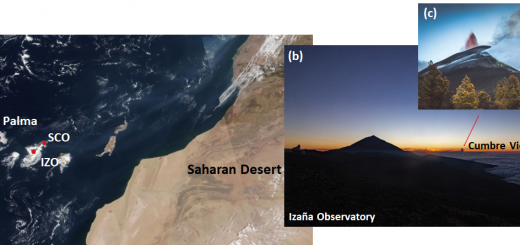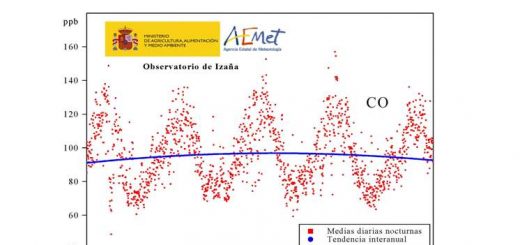New study: Saharan dust mixed with North African industrial pollutants
North Africa is the largest source of desert dust. These dust particles are transported to distant regions and they influence our environment in different ways. They may change the atmospheric radiative balance and influence on cloud and ice formation. It is believed that dust deposition in the ocean may modulate the primary production, i.e. acting as “fertilizer”, and consequent CO2 cycle. Finally, airborne dust results in air quality impairment and this is a matter of concern for exposed population.
Scientists of the Izaña Atmospheric Research Centre (AEMET), the Research Council of Spain (CSIC) and the University of Huelva have recently discovered that Saharan dust is very frequently mixed with industrial pollutants emitted in North Africa. Mixings between dust with sulphate, nitrate, ammonium and some metals (V, Ni, Pb, Cl) are frequently observed. These pollutants are released by oil refineries of Morocco and Algeria, coal power plants from Morocco and phosphate based fertilizer industry of Morocco and Tunisia. Moreover, open phosphate mines change the texture of soil and this may modify natural desert dust emissions. The mixing of dust with pollutants may modify dust properties and this may modulate how dust influence on our environment. The strength and direction of this modulation is nowadays unknown. This study is based on experimental data collected at the Izaña observatory (Tenerife island), one of the 25 stations constituting the Global Atmospheric Watch network.
Publication:
S. Rodríguez, A. Alastuey, S. Alonso-Pérez, X. Querol, E. Cuevas, J. Abreu-Afonso, M. Viana, M. Pandolfi, and J. de la Rosa. Transport of desert dust mixed with North African industrial pollutants in the subtropical Saharan Air Layer. Atmos. Chem. Phys. Discuss., 11, 8841–8892, 2011.
Link: www.atmos-chem-phys-discuss.net/11/8841/2011/







